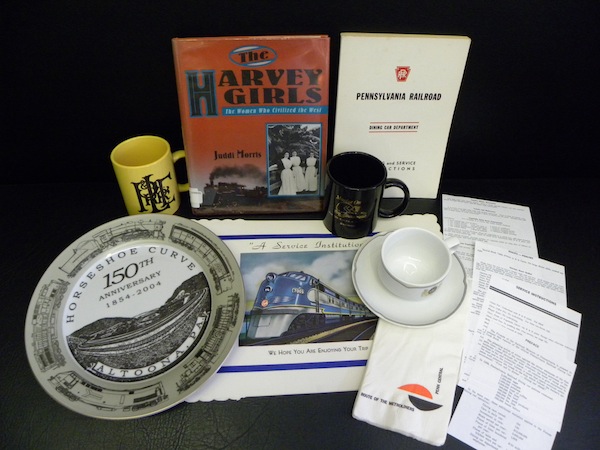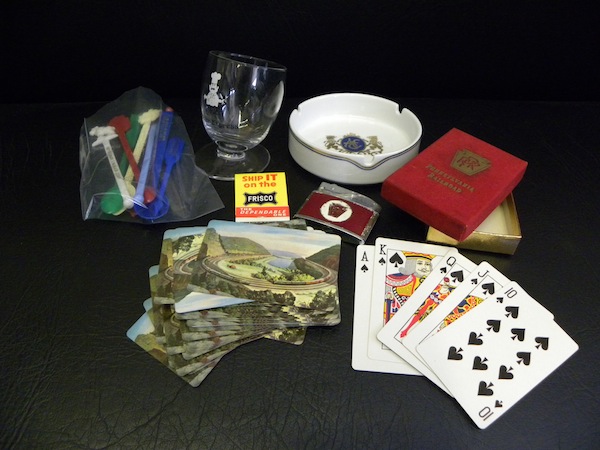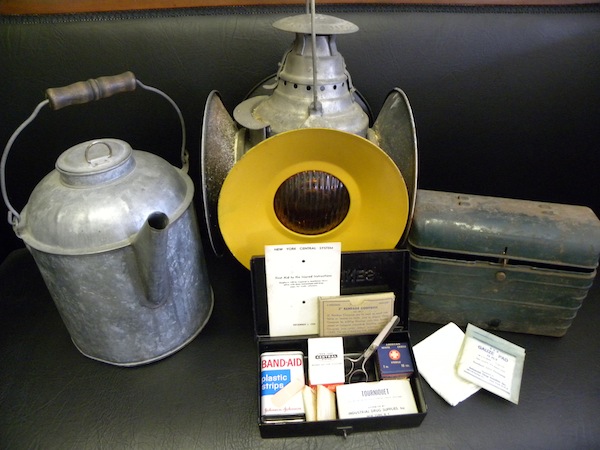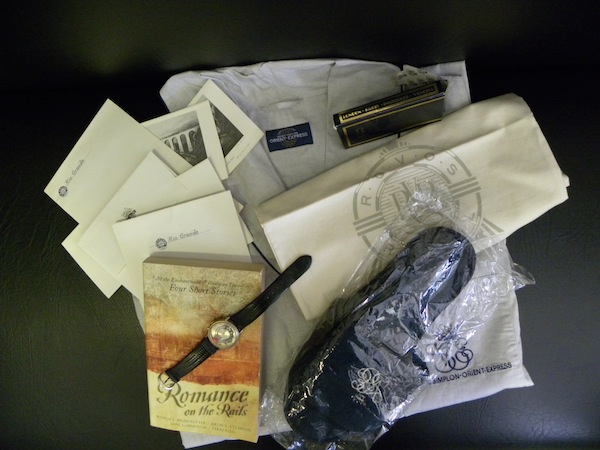
Fairbanks Feature: Something to Remember You By
James D. Van Trump Library | Frank B. Fairbanks Transportation Archive | Fairbanks Features
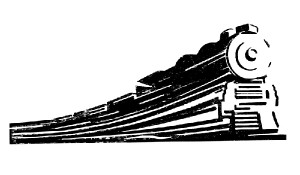 Showcasing a variety of materials located in the Frank B. Fairbanks Rail Transportation Archive
Showcasing a variety of materials located in the Frank B. Fairbanks Rail Transportation Archive
No. 11 Presentation
Fairbanks Feature: Something to Remember You By
Americans love remembrance items that are free or inexpensive. Having these tokens is a good way to recall a trip, long after returning home to the routine of life. In the past, the gifts from the railroads to first-class passengers were generous.
The Frank B. Fairbanks Rail Transportation Archive has some wonderful memorabilia from rail lines across the country, and even a few items from European lines. These artifacts recall a time when train travel was more than a destination: it was an event! The Archive also has some everyday common worker materials that are no longer used.
The following artifacts are just a few from our collection. All artifacts in the collection are available to view when visiting the Archive.
- When you come to the end of the day you might: Write a note on Denver-Rio Grande or Erie stationery; put on slippers and pajamas from the Orient Express; place your dirty clothes in the Rovos Rail laundry bag; and polish your shoes with a soft cloth from the Orient Express packet. Before turning out the light, read a chapter from Romance on the Rails and set your watch for the new time zone the next day, knowing the train whistle alarm on the watch will awaken you.
- Workin’ on the railroad you might: Use the four-color signal light for train messages; place oil on a squeaky wheel; enjoy your lunch from a lunch pail, well used; and take care of any mishap with the New York Central’s first-aid kit.
- What shall we have to eat? Railroad dining car personnel were proud of their food preparation and also provided beautiful menu presentations that the diner could keep as souvenirs. The Archive has close to a hundred menus from rail lines around the country. Here are a few samples: Empire Builder, of the AMTRAK line; Santa Fe Railway; Baltimore & Ohio Railroad; Pennsylvania Railroad; and VIA Rail Canada.
- The Club car was mostly a men’s domain, but not by any rule. It was really a room for those who desired a social place, as the train made its way. Playing cards, smoking, or having a drink (straight or mixed) was part of the Club car scene.
- The early trains had no dining cars. The Santa Fe Railroad provided a chain of restaurants run by Fred Harvey that served passengers at various stops along the way. The meals were good, but the Harvey Girls who served in the restaurants were the claim to fame! You might enjoy a dinner in the dining car using a Missouri Pacific placemat, a Penn Central napkin, a Horseshoe Curve Anniversary plate, and an American Orient Express cup and saucer. Mugs are a newer addition, but remind us of the P&LE and the Oil Creek & Titusville RR. To understand and appreciate the high standards of the Pennsylvania Railroad dining experience, this Pennsylvania Railroad cooking and service instruction book is a must read.
The Frank B. Fairbanks Rail Transportation Archive is open by appointment on Mondays, from 10:00 a.m. to 5:00 p.m. Use of the archive is free to PHLF members (one of the benefits!); non-members are assessed a $10 use fee.
The Archive is located on the fourth floor of The Landmarks Building at Station Square, in the offices of the Pittsburgh History & Landmarks Foundation.
To schedule an appointment, email the Librarian James Halttunen: James@phlf.org

